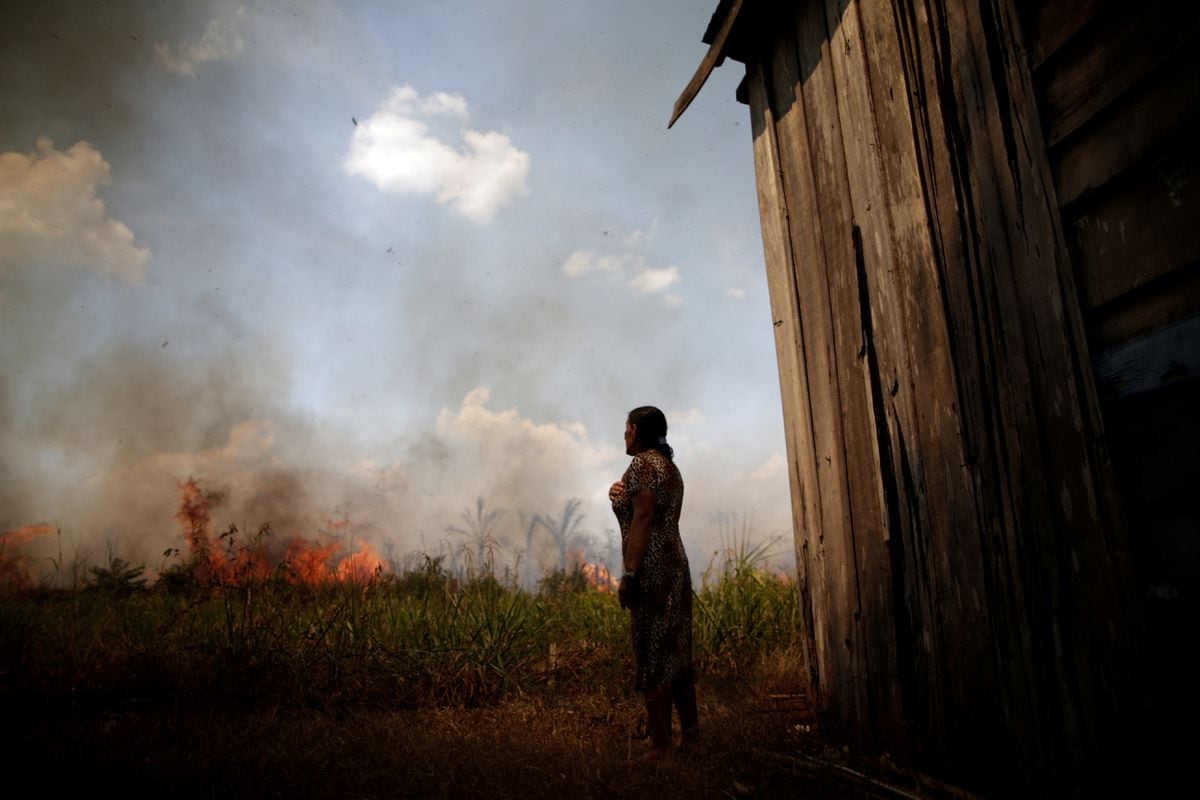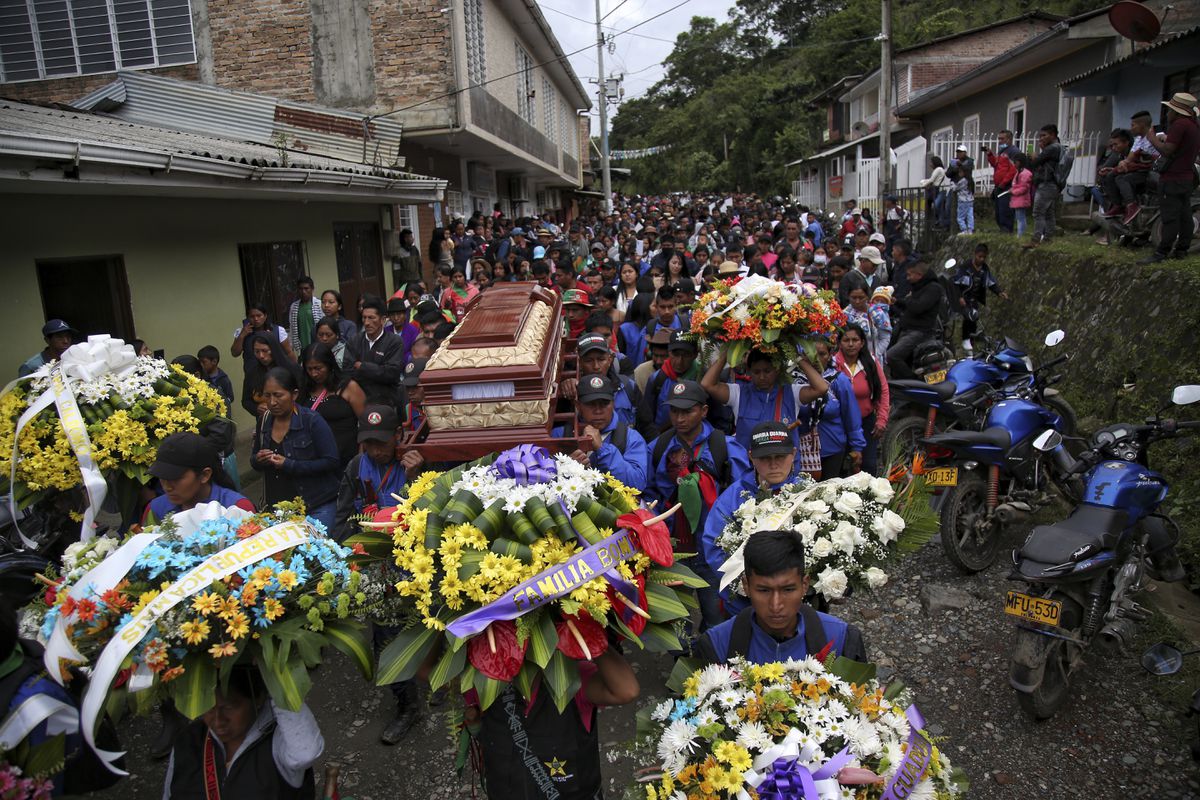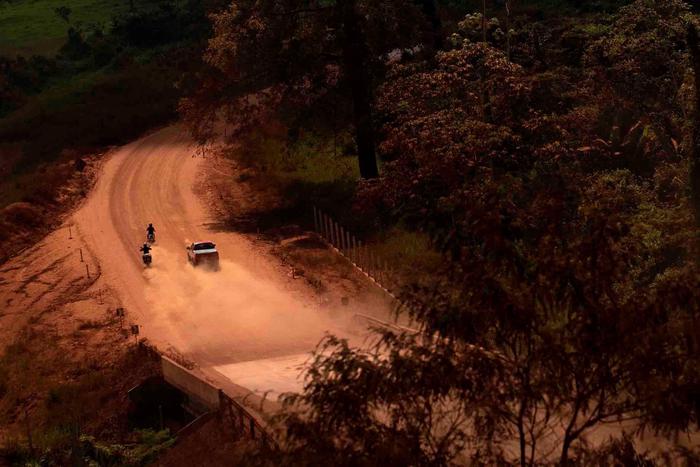A woman watches as a forest fire approaches her home, Porto Velho, Brazil, in August 2020.Ueslei Marcelino (Reuters)
EL PAÍS offers the América Futura section for its daily and global informative contribution on sustainable development. If you want to support our journalism, subscribe here.
In 2019, the Brazilian city of Sao Paulo went dark. It did not do so by the parameters of day and night, as usual, but because the particles of the fires of the Amazon rainforest had traveled to the populated city, dyeing everything gray. The episode, which raised many questions about the impact of fires on public health, also remained engraved in the memory of Eimy Bonilla, doctor and researcher in Environmental Sciences and Engineering at Harvard University, United States.
"There was already a lot of evidence, scientific articles, that talked about how large cities were affected by this smoke," says Bonilla. As she had already been putting the magnifying glass on the fires in the Amazon, she also wanted to know how this phenomenon affected the health of the indigenous people. "What about the people who are close to these fires and whose information is not in the medical records, since many do not have access to the system?" he asked then.
More information
The slow agony of the Brazilian Amazon from a bird's eye view
It focused on PM2.5 particles left by smoke from fires as the air moves it; They are particles so fine that they only reach 2.5 microns in diameter and are up to twenty times smaller than the diameter of a hair. By entering the lungs faster, avoiding the various barriers that the body has to protect us, exposure to these particles is related to premature deaths and respiratory diseases. They have also been associated with cardiovascular problems, cancer, metabolic dysfunctions, mental health impairment and a loss in the days a person can work.
Through a model that combines how air travels through the atmosphere when there are and are not fires, with demographic information from the Amazon basin and a formula on the impact of PM2.5 on premature deaths, she and her team concluded that those most at risk are the indigenous communities of the Amazon. While between 2014 and 2019, the period they analyzed, there were around 12,000 premature deaths each year throughout South America, the figure only for those in indigenous territory is about 230 premature deaths.
A more blunt way to look at it, Bonilla says, is this: while exposure to smoke is responsible for two premature deaths per 100,000 people throughout South America, in indigenous territories it rises to four deaths per 100,000 people. That is, it doubles. "This is a big problem, because, as we know, they are very small populations, but highly affected. It's worrying," explains the expert and co-author of the study published in Environmental Research: Health.
Viewed by country, the conclusions also vary. In Brazil, Argentina and Colombia – the research clarifies – the greatest excess mortality related to fire smoke is for the urban population. In Peru and Bolivia, on the other hand, there are greater premature deaths related to this problem in indigenous communities. To give another example, the data combined between 2014 and 2019 suggest that exposure to smoke from fires represents almost 39,000 deaths throughout Brazil, and that in only the indigenous territories of Peru reaches 500 premature deaths.
The situation becomes more worrying if the trend continues as it is today: more fires encouraged by human activities such as mining, logging and agriculture. Not to mention that climate change and high temperatures are making fires more likely. Since 2002, the study also says, the annual number of fires in the Amazon has twice exceeded the figure of 600,000, in 2004 and 2007. And although between 2004 and 2013 it began to decrease, reaching 264,000 fires per year, it shot up again to about 500,000 in 2020. Fires that, when they dye the big cities gray, it is because before they also did it with the small neighboring towns where they arose.


/cloudfront-eu-central-1.images.arcpublishing.com/prisa/QTVF3EOGLFBTPJL3YXHGH4CEFE.jpg)




/cloudfront-eu-central-1.images.arcpublishing.com/prisa/GE2HIPPGSREYXNPF3G7BWKT62U.JPG)

/cloudfront-eu-central-1.images.arcpublishing.com/prisa/UYB5LX3DDBAQTJNDI5EKYZLHEM.jpg)





